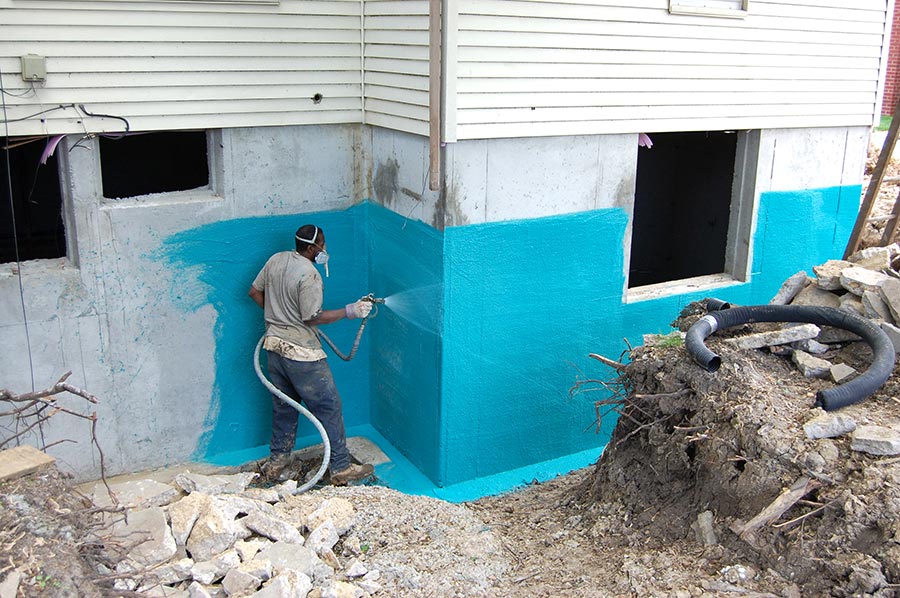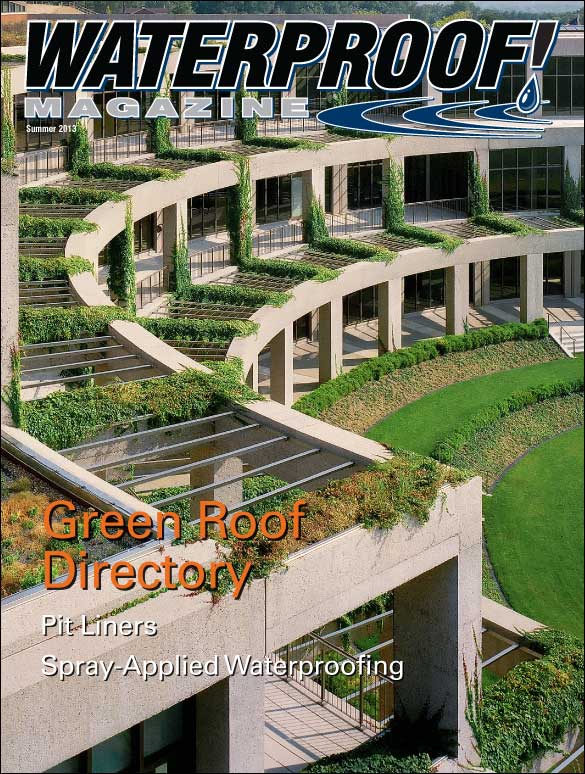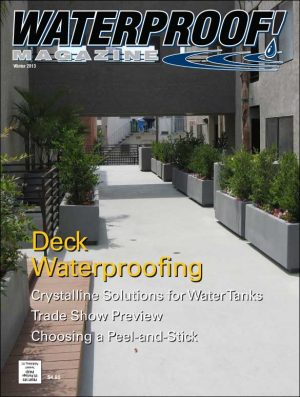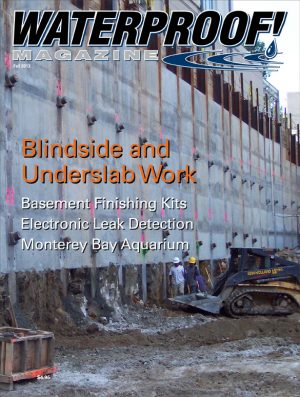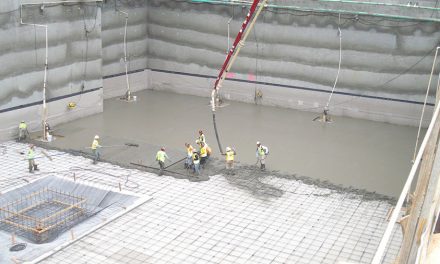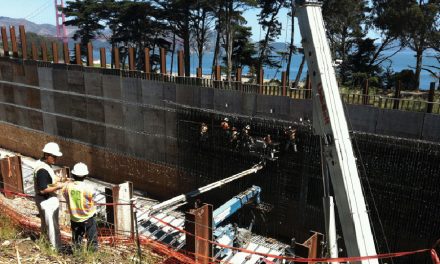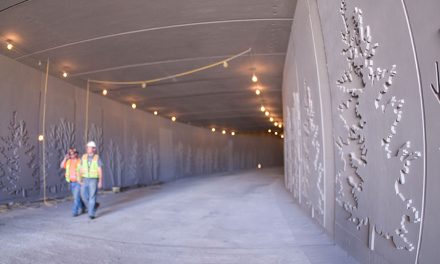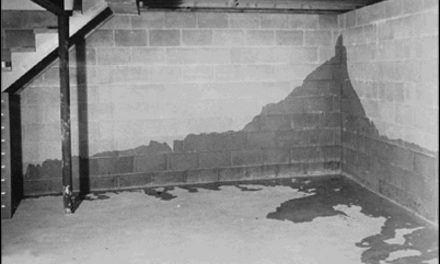Many new waterproofing formulas are rubber-polymer based, instead of asphalt-based, which gives them incredible flexibility and performance. They’re also safer for the environment and the applicator.
Liquid-applied waterproofing systems have been around for decades. Over the years, these coatings have built a reputation for being a fast, economical, reliable way to waterproof basement walls.
But the construction industry is not the same as it was 20 or 30 years ago. Project timelines are tighter. Budgets are tighter. Basement waterproofing is expected to perform better. Today, owners use basements as living space—not storage—so concern over indoor air quality is high, and mold and dampness are no longer tolerated.
Fortunately, waterproofing manufacturers have not only kept up with rising expectations, but exceeded them. For instance, systems are available for application to damp, or “green”, concrete, so waterproofing can be applied as soon as the forms are removed. Other systems allow protection courses to be applied the same day as the waterproofing, instead of having to wait a few days. Water-based systems are available for coverage of rigid foam insulation, such as ICFs. Cold weather formulations allow application even when temperatures dip below freezing.
Products now on the market offer “instant” cure times that will achieve virtually any thickness in one coat. The performance characteristics— adhesion, elongation, etc.—of these products are astonishing. Many of these advances in waterproofing are due to switching from an asphalt-based product to a rubber-based compound.
History
Spray-applied waterproofing membranes specifically aimed at the residential basement market first appeared in the late 1970s and ‘80s as an alternative to cementitous parge coats and self-adhered sheet goods.
The advantages of spray-applied systems were immediately apparent. It provided a way to create a seamless waterproofing barrier on uneven substrates or in areas with complex detailing. Wrinkles and adhesion problems—sometimes a concern for peel-and-stick systems—didn’t exist. Most importantly, the coatings’ flexibility and strength allow them to bridge small cracks, remain flexible at low temperatures, and to protect against water under hydrostatic pressure.
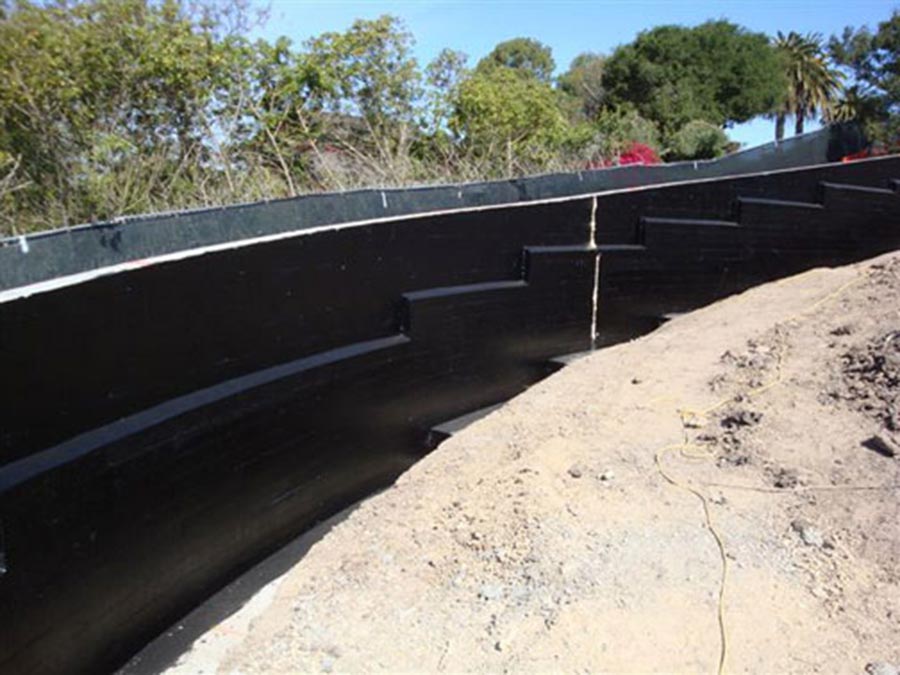
With today’s spray-applied waterproofing membranes, durable, seamless protection is acheived in one efficient pass.
By the mid-1990s, distribution centers and specialty installation contractors were available in nearly every region of the country. Most of them were using solvent-based asphaltic systems, although water-based polymer systems were starting to appear.
Water-based systems offered numerous advantages. They’re non-toxic, which means there’s no bad smell, and no need for special ventilation and respiration equipment. Clean up requires little more than soap and water, instead of hazardous—and expensive—cleaning agents.
Over the past 20 years, single-component systems have continued to gain popularity due to their simplicity and lower cost, although two-component systems are still common.
Two-component systems have numerous advantages single-component systems cannot match. They can be applied in a wider range of weather conditions, for instance, and become tacky much more quickly.
But there are drawbacks, too. Double-component systems rely on a chemical reaction between the two components to cure, so the exact mix ratio is critical. And the spray equipment is more complex, using four pumps instead of one.
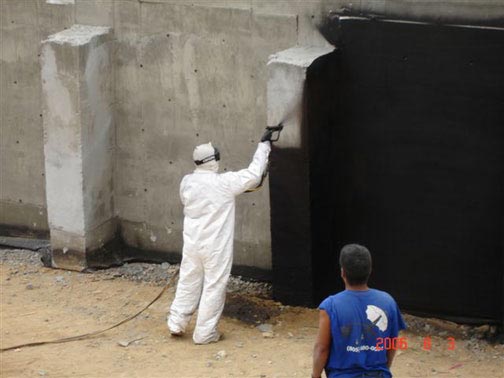
Liquid applied waterproofing is especially useful for uneven substrates or in areas with complex detailing.
Single-component products are more forgiving. Most are water-based formulations, which are low-VOC, non-flammable, and provide credit toward LEED certification. But a few are solvent based. Because curing results from the evaporation of the carrier, good weather and warm temperatures are usually required.
In the 21st Century, companies have developed products that use rubber polymers as the primary waterproofing agent. These products combine the simplicity of single-component systems with performance characteristics asphalt cannot match.
Technological improvements and breakthroughs are occurring regularly in this field. While it would be difficult to mention every development and innovation, here’s a look at a range of waterproofing options currently available that provide unrivaled durability, adhesion and flexibility while being safer for the environment and the applicator.
Fast Track Schedules
As mentioned above, one major advantage of state-of-the-art waterproofing is that it eliminates or reduces construction delays. Ecoline, marketed by Epro Services, is a good example. The product adheres tenaciously to the substrate, even when applied to green or uncured concrete. It has “instant build,” which eliminates shrinkage and allows for application in inclement weather. And Ecoline is available in three different viscosities to accommodate temperature and other jobsite variables.
With this product, general contractors can cut days from the schedule, and eliminate most weather-related delays. Waterproofing contractors can tighten their schedules and plan on doing more work in a given amount of time. Applicators will appreciate that it’s water-based, so there’s no VOC’s, minimal odor, and easy to clean up.
Yet the performance characteristics compare favorably with any other top-of-the-line coating.
Instant Cure
Ecoline isn’t the only product with instant build. TRITOflex, a water-based liquid rubber, claims to have “instant cure times.”
Dustin Brooks, director of sales development at Triton Incorporated, says “Our primary product is a liquid spray-applied rubber waterproofing membrane that cures to the touch instantly. Due to this unique property, it can be sprayed to any thickness in one coat.”
Also solvent-free, there are no VOCs or odor. It’s a “green” product that is safe for the environment and the applicator, yet durable enough that it’s been used for pools, planters, ponds, and other waterproofing projects.
Because it’s rubber-based, the product offers incredible flexibility and elongation; properties that are critical when applied over substrates that may crack over time.
Installation is quick and simple. Spray it on to a clean dry substrate, and other phases of construction can proceed immediately.
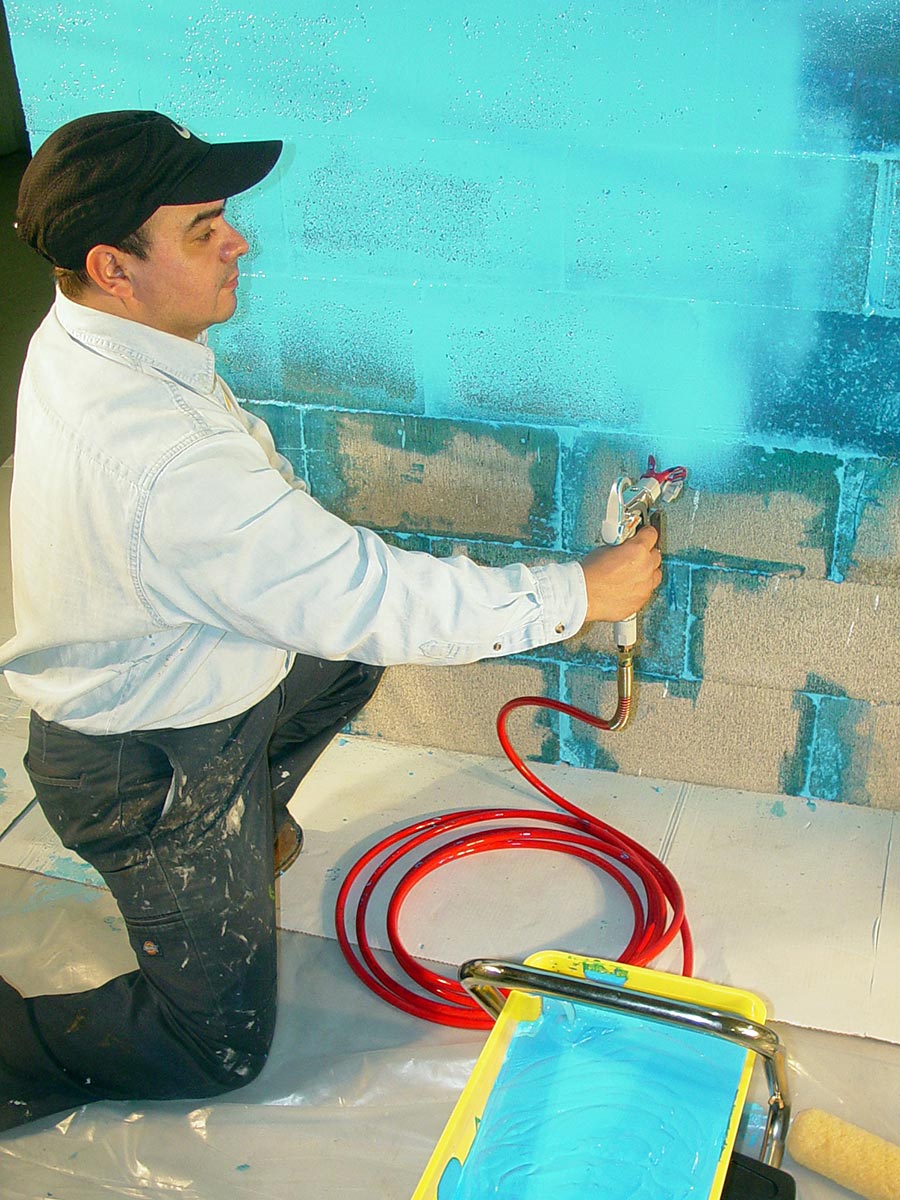
New waterproofing compounds adhere so tenaciously to the wall that they actually add structural strength.
“This is a newly released product, but we’re having huge success with it,” reports Brooks. He adds, “This material is so robust that it can provide some measure of structural stability to concrete in addition to waterproofing. We are currently testing it in New Zealand to determine if it can prevent extensive earthquake damage in concrete homes.”
Strength
Blue Max, an elastomeric liquid rubber, has earned a reputation for its strength. It adheres so tenaciously to concrete block that the company has built water tanks more than 4 feet high at trade show demonstrations using no mortar, just the Blue Max.
But Blue Max is first and foremost a waterproofing product. Developed by Ames Research Laboratory, it offers excellent adhesion and flexibility. “This product will flow into cracks and crevices as a liquid, and then sets up as a durable rubber to seal leaks wherever they occur,” says Dr. Bill Ames, president of the company. Fully cured, it will still stretch to eight times its original length without leaking.
Like the other options already mentioned, it’s water-based, and is nontoxic, VOC-free, and low odor. It’s safe enough that it can be used as a potable water coating.
Blue Max is versatile enough that it can be brushed or rolled on the wall—no sprayer needed (as can Ecoline). Whatever application method is chosen, either product needs to reach a final cured thickness of at least 30 mils to ensure protection.
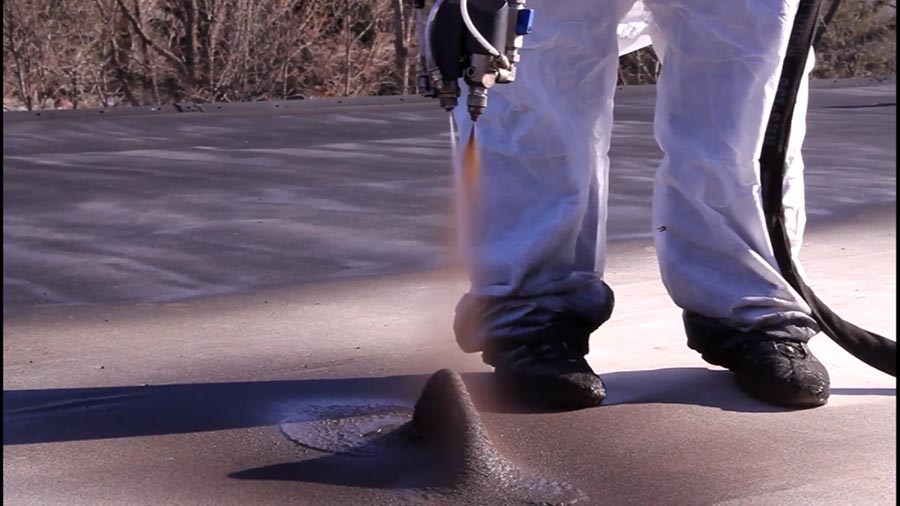
“Instant” cure times allow applicators to build up membranes to virtually any thickness in a single pass without sags or runs.
Flexibility
One of the most remarkable developments in waterproofing is Rub-R-Wall, sold direct to contractors by Rubber Polymer Corp. Applied at standard thickness, the membrane will stretch an average of 1800% before breaking.
Matt Veazey, president and CEO at the company explains, “Basement walls will always move, whether through settlement, shrinkage, or actual shifting. So we created a product that would continue to protect regardless of that movement.”
Available in both solvent-based and water-based formulations, Rub-R-Wall offers an unmatched level of elasticity and longevity.
It’s applied with an airless paint sprayer; the recommended “wet thickness” of 60 mils yields 40 mils of cured membrane, nearly entirely rubber.
“This is a single-component system that contains no asphalt, says Veazey. “It uses premium ingredients like virgin rubber to ensure a high-end, high quality product. We feel confident that this product will offer protection well in excess of 100 years.”
The 100% rubber formula also makes the membrane self-healing if punctured. Below grade, mechanical fasteners aren’t necessary, as rigid foam boards and dimple drain sheets can be adhered simply by pressing them into the newly applied membrane. But Veazey says Rub-R- Wall is also popular above grade as an air barrier, and that fasteners can be driven through it without compromising the envelope.
The solvent-based formula is rain-resistant within one hour and can be applied in temperatures as low as 15 degrees F. The water-based line takes two hours to reach rain-resistance, and has a minimum application temperature of 35 degrees. Either can be sprayed on green concrete, (as long as the substrate is dry) and cure in 24 hours.
Conclusion
The sophistication of waterproofing products now on the market is creating a new level of performance and productivity for waterproofing contractors.
With today’s spray-applied waterproofing membranes, fully adhered, seamless protection is possible in one efficient pass. Contractors can waterproof at least four times more area than peel-and-stick or troweled coatings in the same amount of time. That means that contractors can now take on more work with the same size team or reduce labor costs.
Weather-related delays can nearly be eliminated.
While general contractors worry about providing maximum protection, faster turnaround, and tighter budgets, advances in spray-applied waterproofing may be a viable solution to meet all of these demands.
Summer 2013 Back Issue
$4.95
Advances in Basement Coatings
Library of Congress Green Roof
Industrial Pit Liners
Green Roof Directory
AVAILABLE AS DIGITAL DOWNLOAD ONLY
Description
Description
Advances in Basement Coatings
New developments in spray-applied membranes include products with instant cure times, achieve virtually any thickness in one coat, and offer unprecedented flexibility and performance.
Library of Congress Green Roof
The Library of Congress is the largest library in the world. And the roof of its Virginia facility—covering more than 225,000 sq. ft.—is one of the largest green roofs in the world.
Industrial Pit Liners
Storing everything from mining slurry to sewage, it’s absolutely essential that the membranes and liners be absolutely waterproof despite the often corrosive nature of the contents.
Green Roof Directory
Categorized by the products and services offered, this is a comprehensive list of products, services and companies servicing the vegetated roof industry.
Additional Info
Additional information
| Magazine Format | Digital Download Magazine, Print Mailed Magazine |
|---|

